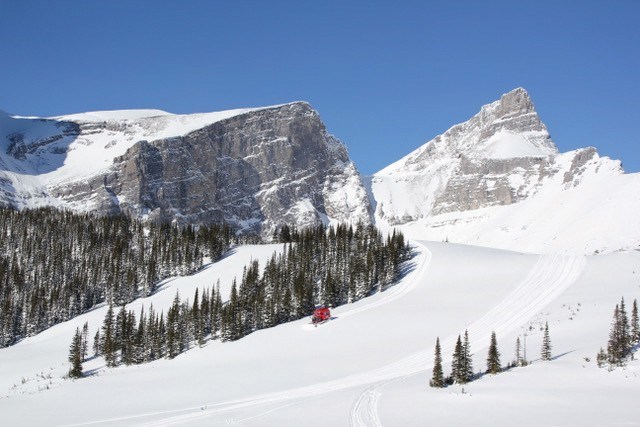"We're going to have a really loud noise here in a few seconds," warns Chris Chevalier, mid-interview.
A few seconds pass, and, as promised, the thundering boom of a dynamite charge sounds. Chevalier, the president of Fortress Mountain, is helping his crews carry out avalanche control.
It's the kind of no-fuss, hands-on approach he hopes to replicate at the Kananaskis Country ski area, south of Banff, Alta.
"All the way through my career, I've always tried to do a bit of everything that my crews do, whether it's avalanche control or patrolling—all kinds of things," Chevalier adds. "That's how we want to run the whole place."
Fortress Mountain has gained new life since attracting $5 million in private investment to revive the resort that was first shuttered back in 2004. On its website, the new ownership group cited a lack of investment as the reason behind the closure a decade and a half ago.
Located about two hours from Calgary, Chevalier said the goal is to capture a portion of the "rubber-tire market" that would normally make the trek over the border to B.C. or the U.S. to ski.
"Alberta exports a number of skier visits to B.C., Montana, Idaho, for example, because people are seeking ski-in, ski-out accommodation and really there is very little here," he noted. "It's a bit of a void for our skiing market and it's something we hope to move into."
Designed by renowned Whistler firm Ecosign Mountain Resort Planners, Phase 1 of the project will include a day lodge, three new detachable chairlifts, one fixed grip chairlift, a refurbished chairlift as well as a moving carpet and tubing zone. A potable water treatment plan is also part of Phase 1, expected for completion by late 2020.
"The lift equipment at Fortress needed to be modernized, which comes at a cost, so our job was to find the most efficient plan for new lift installations that would access the most terrain and provide a good balance of beginner, intermediate and advanced skiing," wrote Emily Amirault, Ecosign's senior resort planner, in an email.
Chevalier said he hopes Fortress Mountain will harken back to its past to offer a boutique experience that is similar to some of Western Canada's smaller resorts.
"I personally love going to places like Whitewater, Red Mountain, sort of the smaller resorts with great, steep tree skiing and so forth. Don't get me wrong; I love going to Whistler and Blackcomb as well," he noted. "It's just a vibe that this place has and had in the past. It was more of a mom-and-pop ski hill.
"While we want to have modern facilities and lifts and so forth, we really want to keep that old Fortress vibe alive."
The resort anticipates around 78,000 annual skier visits in its first year, ramping up to about 120,000 in the following years, Chevalier said. The total lift capacity will be 2,500.
Chevalier is hoping to capitalize on both new skiers to the sport as well as runoff from the trio of resorts located in Banff National Park: Lake Louise, Banff Sunshine and Mount Norquay.
"The thing we're seeing in this neck of the woods is a real interest in snowsports from new Canadians. This is the reason why we had Emily design a little tubing park because they're really into tubing and we're seeing the rise in popularity of that," he said. "We also think we're well poised to take advantage of our crowded national-park cousins. I was at Sunshine for 28, 29 years so I know what it's like there on weekends and holidays."
For more information, visit skifortress.com.




